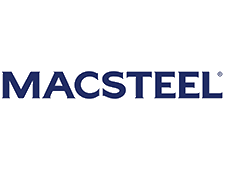LEMCO: A Family Affair That Defined the Steel Industry
LEMCO is South Africa’s structural steel specialist. It can do anything; any form, any shape and any size that might be required. The sons of its founder, Pieter Laubscher, are at the helm today, and we caught up with Pieter Jnr, who oversees the fabrication facility, to discuss how the current goings on at the company, and how it aims to continue the innovation which has characterised its operations to date.
Pieter Laubscher laid the first LEMCO foundations more than 50 years ago when the nascent Pieter Laubscher Construction began designing and manufacturing steel products and buildings in the Northern Cape of South Africa, at that time primarily catering for the agricultural market which dominates in the area. The rapid and sustained growth that followed paved the way for the junior Laubschers, Andries and Pieter Jnr, to come on board in the industry much further down the line. As Pieter Jnr explains, however, his involvement and emotional investment began long before he officially joined the ranks.
IN ON THE GROUND FLOOR
“I was involved in the business from a very young age,” he outlines. “I basically grew up in the workshop so I was always involved in one way or another. I couldn’t have started much earlier; I was first cutting on a lathe when I was about 11 years old,” and it must have been easy to predict that these formative years would lead to his full-time participation in the company at a later date.
“I formally joined the business 10 years ago,” he tells us. “Some people say that a family-owned business is more likely to run into challenges or problems than a more corporate organisation, but I believe that it all depends how it is structured. If it is structured correctly then I feel that a family-owned business can work perfectly.”
LEMCO has shown this belief to be absolutely correct as it passes its half-century of operations, which causes Pieter Jnr to reflect on the major changes that he has seen in his own decade as joint-owner. “I think most notable is that the company has expanded a lot in the past few years, and it was very nice to see it in person. Another key shift is that we have incorporated computer numerical control (CNC) machines more and more, and thus started to target a different market. This means that, overall, it has changed immensely.”
Using computers to control machine tools results in a process which is far more precise than manual machining, and can be repeated in exactly the same manner over and over again. Because of the precision possible with CNC machining, the production of complex shapes, that would be almost impossible to achieve with manual machining, suddenly becomes achievable.
WORLD CLASS FACILITIES
“Upgrading is a big area of investment for us at the moment,” Pieter Jnr continues, “in order to give our clients a greater range of options – we will shortly be installing a sand blasting machine, for example, so whether people want to smooth a rough surface, roughen a smooth surface, shape a surface or remove surface contaminants, we can help.
“We are always busy with expansions, though, it is a constant process for us,” he asserts. “We are always investing in some form of new equipment or machinery.”
Currently LEMCO’s facilities include over 2000m² of production space, a 400m² painting bay and over 4000 m² of storage yard, and the main facility is equipped to eliminate almost all labour-intensive processes. Built in 1990, the primary factory has evolved substantially over the years, with continual investments in the latest technology meeting the needs of an industry which refuses to stand still. All this combines to allow LEMCO to produce huge amounts of steel for the market.
“It is a difficult for me to answer, when people ask how much steel we engineer in a month,” is his response to the age-old question as to his production capacity. “I can do more tonnes of steel in one day than in an entire month, for example, if it is heavy type of building that we are working on.
“We do such a huge variety of steel that it differs hugely, too. The most I have done in one week in terms of sheer numbers is 220 tons of steel, but I would say on average, taking into account lighter lattice type of buildings, we get through about 150 tons in a typical month.”
LEMCO’s ability to process quality product in such high volumes means that it is more often than not the company of choice for a large-scale project. The two phases of the Chalala Pig Farm and the hybrid structures which LEMCO provided are just one standout of a portfolio which also numbers warehouses, malls and industrial parks.
TAKING ON SOLAR
As it strives to be the very best in the South African market, LEMCO has also identified the growth of the renewable energy market as an especially viable growth area – it was heavily involved in fabricating both the KaXu Solar One and the 346-acre Khi Solar One, the very first solar plant in South Africa. “The two 1000 ton solar powered buildings have really been the standout recent projects for me,” underlines Pieter Jnr. Khi Solar One is rumoured to be the first thermal solar tower plant in Africa and the first tower plant to achieve 24 hours of operation with solar energy only.
One of the most difficult aspects for many companies is managing to stay at the forefront of their industry, particularly in one where things move and people are left behind as quickly as this. LEMCO’s ability to do just that is enviable, according to Pieter Jnr: “We stay ahead through investing heavily back into the company in the form of new technology and skills development.” The right people are of course central to this as well, as he continues.
“If you expand there will always be a place for personnel that is keen to learn and my preferred way of getting the best staff is to invest in local personnel and skills development, through some of our own projects.”
LEMCO’s commitment to innovation and fervently improving its craft may see it expand outside of the country, and while the manufacturing facility may remain rooted in South Africa, the versatility of the company and the demand for its services will see the LEMCO approach applied in faraway climes.
“I hope that we can expand in future, to allow us to work north of our borders more,” Pieter Jnr concludes. “I feel there is a lot of potential for us and many projects where we could apply all the experience we have gained over the years to exceptional results.”


